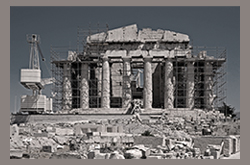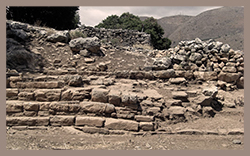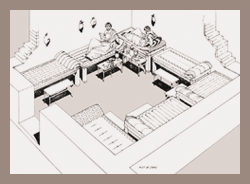download article as .pdf: Ricerche archeologiche all’interno del Castello Aragonese di Taranto. Note preliminari
Continue Reading
.
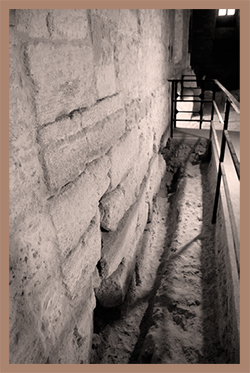 L’attività archeologica condotta all’interno del Castello Aragonese di Taranto ha permesso l’acquisizione di un bagaglio informativo esteso, propedeutico alla comprensione su larga scala delle emergenze rinvenute e alla ricostruzione e datazione delle diverse fasi storiche. Tale attività, inoltre, ha offerto l’occasione per compiere una rilettura critica dei dati archeologici già noti relativi al settore orientale della Città Vecchia. Nonostante la complessa storia edilizia e monumentale dell’area e le pesanti manomissioni connesse allo sviluppo dell’imponente sistema orientale di fortificazione della città post-antica, è possibile iniziare a leggere alcuni elementi del sistema di difesa e di comunicazione della polis greca, identificando limiti e direttrici di attraversamento dell’acropoli. Inoltre, iniziano a emergere consistenti elementi di una cultura poliorcetica avanzata, che attesta l’importanza e la complessità dell’aggiornamento dei sistemi difensivi interni della comunità tarantina. Per la prima volta, infine, è possibile ricostituire alcuni aspetti del complesso paesaggio urbano dell’acropoli.
L’attività archeologica condotta all’interno del Castello Aragonese di Taranto ha permesso l’acquisizione di un bagaglio informativo esteso, propedeutico alla comprensione su larga scala delle emergenze rinvenute e alla ricostruzione e datazione delle diverse fasi storiche. Tale attività, inoltre, ha offerto l’occasione per compiere una rilettura critica dei dati archeologici già noti relativi al settore orientale della Città Vecchia. Nonostante la complessa storia edilizia e monumentale dell’area e le pesanti manomissioni connesse allo sviluppo dell’imponente sistema orientale di fortificazione della città post-antica, è possibile iniziare a leggere alcuni elementi del sistema di difesa e di comunicazione della polis greca, identificando limiti e direttrici di attraversamento dell’acropoli. Inoltre, iniziano a emergere consistenti elementi di una cultura poliorcetica avanzata, che attesta l’importanza e la complessità dell’aggiornamento dei sistemi difensivi interni della comunità tarantina. Per la prima volta, infine, è possibile ricostituire alcuni aspetti del complesso paesaggio urbano dell’acropoli.
.
The archeological activities in the Castello Aragonese of Taranto allow us to obtain a vast amount of information, necessary to understand the emerged findings, and the reconstruction and datation of the various historical phases. Moreover, these activities gave the possibility for a critical re-reading of the already known archeological facts relating to eastern part of the Old City (Città Vecchia). In spite of the complex building and monumental history of the area, and the serious violations linked to the development of the imposing oriental system of fortification of the post-antique town, it’s possible to begin to read some elements of the defending and comunication system. We are able now to identify the borders and see crossing arteries of the acropolis. Moreover, important elements of an advanced poliorcetic culture are starting to emerge. This confirms the importance and the complexity of the modernization of the interne defense systems of the Tarantine community. Besides, for the first time it is possible to reconstitute some aspects of the complex urban landscape of the acropolis.
download article as .pdf: Ricerche archeologiche all’interno del Castello Aragonese di Taranto. Note preliminari
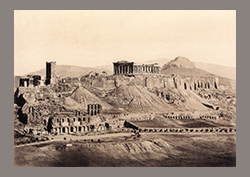 With the paper “Criteria of structural supplementation in the restoration of the monuments of the Athenian Acropolis. Methodological problems and design choices” there will be a discussion of the criteria on the basis of which the procedure of supplementing the architectural members is decided. After a brief historical presentation of the previous restoration projects and a brief examination of the restoration principles followed today, these criteria are grouped in five main categories taking as an example the Propylaia restoration. These categories are illustrated with characteristic examples from the interventions at the Propylaia in the last ten years, through which both the methodological problems and the design choices emerge.
With the paper “Criteria of structural supplementation in the restoration of the monuments of the Athenian Acropolis. Methodological problems and design choices” there will be a discussion of the criteria on the basis of which the procedure of supplementing the architectural members is decided. After a brief historical presentation of the previous restoration projects and a brief examination of the restoration principles followed today, these criteria are grouped in five main categories taking as an example the Propylaia restoration. These categories are illustrated with characteristic examples from the interventions at the Propylaia in the last ten years, through which both the methodological problems and the design choices emerge.
